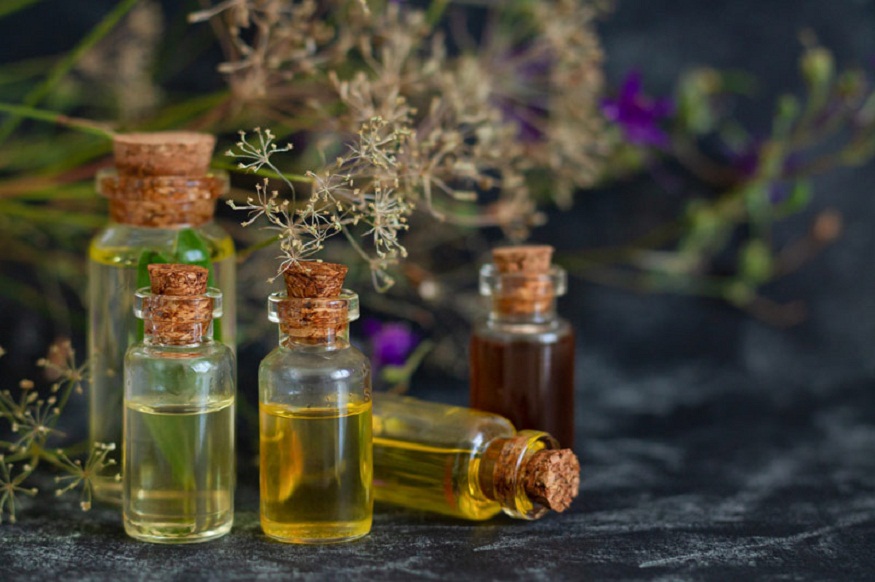Climbing the bus steps, crouching to tie a shoelace, or standing through a long commute, little motions can signal the start of knee discomfort. That nagging twinge may fade for a while, only to return when least expected, making everyday activities feel like hard work. Instead of masking the ache with quick-acting creams or pills, many people now look toward gentle, plant-based solutions that nourish the joints while easing pain.
Ayurveda, India’s traditional health science, meets that need by treating the body as an interconnected whole. Among its most trusted tools is an Ayurvedic oil for knee pain, a blend of slow-infused herbs and warming base oils that sink deep into the tissues. Understanding how and why these oils work begins with a closer look at common knee problems and the principles that guide Ayurvedic care.
What Triggers Knee Pain?
From early morning stiffness to discomfort after standing too long, the reasons behind it vary, but they often share common roots.
- Everyday Strain
Knees carry much of the body’s load. Hours on the feet, repetitive squats, or frequent stair climbing gradually wear down the protective cartilage that cushions the joint. As that layer thins, movements once taken for granted become stiff or uncomfortable.
- Degenerative and Inflammatory Conditions
Osteoarthritis is the most widespread joint disorder and often strikes the knees first. When cartilage erodes and bone begins to rub on bone, pain, swelling, and reduced flexibility follow. In some cases, inflammation of the surrounding soft tissue adds an extra layer of tenderness and heat, making simple bending a challenge.
- Lifestyle Factors
Processed foods, inadequate healthy fats, and long stretches of inactivity limit the nutrients and blood flow that joints depend on. Over time, these choices can slow repair processes and amplify pain signals.
Ayurveda’s Perspective on Joint Pain
Ayurveda takes a wider view of pain; it doesn’t stop at the physical but looks into the balance of internal energies, digestion, and daily routines. Joint pain, in this tradition, is not just a symptom but a sign that something deeper needs attention.
The Role of Vata Dosha in Joint Discomfort
In Ayurvedic understanding, joint pain is often connected to an aggravated Vata dosha. Vata is associated with movement and dryness, so when it goes out of balance, it can lead to cracking, stiffness, and pain in the joints. This is why warming and oil-based therapies are commonly recommended.
Imbalance and Accumulation of Ama (Toxins)
Another concept Ayurveda emphasizes is “Ama”,a sticky, toxic residue that builds up from incomplete digestion. Gentle detoxification, along with external applications like herbal oils, can help reduce this load.
Why Ayurvedic Approaches Go Beyond Symptom Relief?
Rather than just numbing pain, Ayurveda aims to support long-term comfort and mobility. It focuses on nourishing the tissues, encouraging circulation, and bringing balance back to the body through natural routines. That’s where Ayurvedic oils truly shine.
Ayurvedic Oil for Knee Pain: What Makes It Effective?
Herbal oils are a major part of Ayurvedic joint care. These aren’t just surface treatments, they’re traditionally prepared with a slow infusion of healing herbs and natural fats to nourish the joints deeply. When massaged gently into the knees, they help soothe discomfort and improve flexibility over time.
Deep Penetration and Warming Effect
One of the reasons Ayurvedic oil for knee pain is trusted by so many is because of its warming nature. Oils help to increase blood flow in the area, which can ease stiffness and support tissue repair. The warmth also helps pacify aggravated Vata, which is often behind joint pain.
Herbal Ingredients Commonly Used in Ayurvedic Oils
Ayurvedic oils are often packed with a blend of herbs that support joint health:
- Nirgundi: Traditionally known for its ability to calm inflammation and reduce swelling.
- Ashwagandha: A strengthening herb that supports the body’s natural healing.
- Bala: Used to nourish and support muscles and joints.
- Shallaki (Boswellia): Believed to help soothe joint discomfort and promote flexibility.
Each herb is cooked slowly in the oil to draw out its natural properties, making the final blend deeply therapeutic.
The Importance of Abhyanga (Ayurvedic Massage) in Managing Pain
Massaging the knees with warm oil, a practice called Abhyanga, is more than a self-care ritual; it’s a therapeutic act that supports both the body and mind. Regular Abhyanga can help loosen tight muscles, encourage healthy joint function, and calm an overactive nervous system. When combined with herbal oils, the effect is even more grounding.
Choosing the Right Ayurvedic Oil for Your Needs
There’s a wide variety of Ayurvedic oils available, and finding the right one makes all the difference. What works for one person might not work as well for another, especially when dosha imbalances are involved. Here’s how to narrow it down.
Matching the Oil with Your Dosha Type
If your pain is dry, cracking, and worse in cold weather, Vata is likely involved. In this case, warm, nourishing oils with grounding herbs may work best. If there’s swelling and heat in the joint, cooling and anti-inflammatory oils may be more appropriate. Consulting an Ayurvedic practitioner can help tailor the approach to your body’s needs.
Checking for Authentic and Clean Ingredients
Look for oils made from traditional methods, which often means small batches, herbal decoctions, and pure base oils like sesame or coconut. Avoid synthetic additives or artificial fragrances. A good Ayurvedic oil will often smell herbal, earthy, and slightly spicy.
How to Use the Oil Properly for Best Results
Warm the oil slightly before use, either by placing the bottle in warm water or rubbing it between your palms. Apply it to clean skin and massage gently in circular motions around the knee. Leave it on for at least 30 minutes or overnight for deeper absorption. Doing this consistently can lead to noticeable improvements in mobility and comfort.
Other Complementary Ayurvedic Practices to Support Joint Health
While oils offer targeted support, the rest of your lifestyle matters too. Ayurveda encourages a combination of supportive routines, gentle exercise, and healing foods to maintain joint flexibility and reduce discomfort.
- Anti-Inflammatory Herbs in Your Diet
Certain spices used in Ayurvedic cooking may help support joint comfort naturally:
- Turmeric: Often used for its soothing properties.
- Ginger: A warming herb that encourages circulation.
- Garlic: Traditionally believed to support healthy inflammation levels.
Including these in your daily meals adds both flavor and support for your joints.
- Simple Lifestyle Adjustments for Stronger Joints
Try to keep moving throughout the day, but avoid overexertion. Gentle yoga, stretching, and walking can help keep joints limber without putting too much strain on them. Also, staying hydrated and keeping your body warm, especially in cooler months, can help reduce joint stiffness.
- Daily Routines (Dinacharya) That Help Maintain Joint Flexibility
Ayurveda recommends following a consistent daily schedule to stay balanced. Waking up early, practicing self-massage (Abhyanga), eating meals at regular times, and prioritizing rest all help the body function more smoothly. These habits support digestion, circulation, and joint health naturally over time.
Conclusion
Stiff, aching knees don’t have to become something you just learn to live with. There are gentle, natural ways to support joint health without turning to constant medication or harsh treatments. One such approach is using Ayurvedic oil for knee pain, which combines traditional herbs and nourishing oils to bring lasting comfort. When paired with small, mindful changes in daily habits, this practice can help you feel more at ease in your body and bring a renewed sense of freedom to the way you move.




